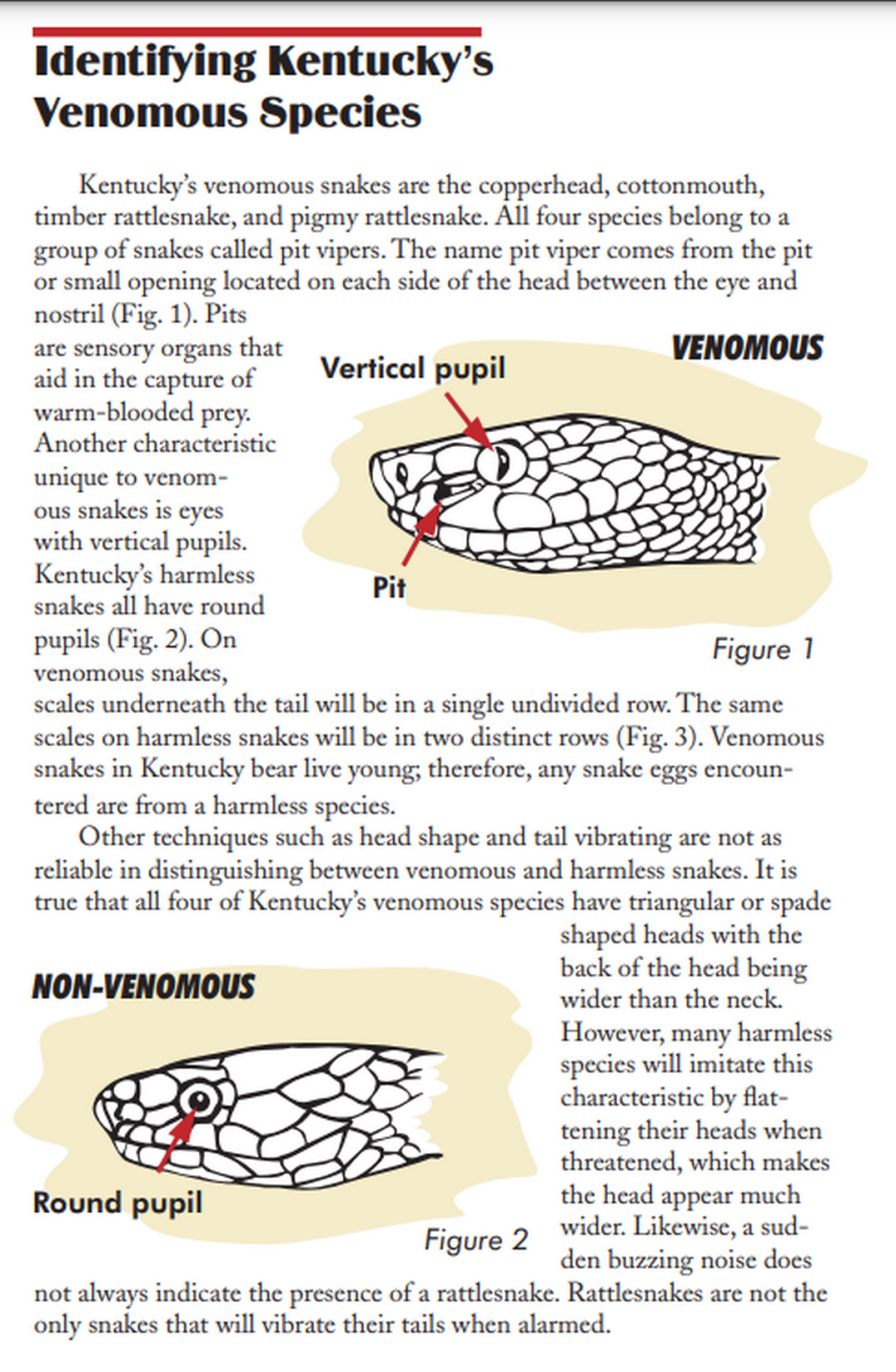It’s baby copperhead season in KY. How to spot them and what to know about their bite
Out of the four snakes known to be venomous in Kentucky, the copperhead is the most encountered with a range that spans the entire state.
What’s more, late summer and early fall is baby copperhead season. So, if you’re planning to get outdoors and enjoy nature as the weather cools down, you could run into a young copperhead that hasn’t encountered a human before.
The Herald-Leader likes to revisit the topic of snakes often — not to sensationalize and stoke fear, but to share key insights from experts. It’s possible for people and copperheads to coexist. All that’s required is ample respect on the part of us humans.
In preparation for fall excursions, we’ve rounded up some previous reporting on the topic. Here’s what to know about the creatures and how to stay safe.
Which months are baby copperheads born?
Copperheads mate in the spring, and in the late summer and early fall, their young are born alive. That’s right, copperheads don’t lay eggs.
Instead, the females keep their eggs inside of their body until “hatch” time. For copperheads, the incubation time is between 105 and 110 days, according to the Texas Parks and Wildlife Department.
Once born, the offspring are essentially left to fend for themselves with venom, fangs and a small amount of egg yolk from their mother. The young disperse and must make their own way in the world.
Only about 7 to 9 inches long, baby copperheads are vulnerable as prey for hawks, owls, coyotes, cats and even other snakes. Kingsnakes, racers and cottonmouths, all of which can also be found in Kentucky, are known to prey on young copperheads.
Estimates vary on how many young are born at once, but the mother can give birth to as many as 8 or 10 young snakes. Still, only about 10 to 25% of those will survive the winter and reach adulthood. To survive, newborns hide under leaves, brush and other types of cover.
However, because snakes are cold-blooded and need the sun to regulate their body temperature, they can’t hide forever. When in open areas, young copperheads will rely on their camouflage to avoid notice or wiggle the tips of their tails, doing their best impression of a rattlesnake. If all else fails and there’s no escape, they will lash out with a bite.
Yellow tail? Time to bail.
Young copperheads are very similar to adults with one key exception. Newborn copperheads will have yellow or greenish-yellow tail tips that gradually fade with age, according to the Kentucky Department of Fish and Wildlife Resources.
Along with serving as a defense mechanism, the yellow tails also help them catch food. The wagging tail tip can resemble an enticing caterpillar to a small frog or insect.
Like young copperheads, young cottonmouths and pygmy rattlesnakes also have yellowish tail tips. However, cottonmouths have a range limited to the western half of Kentucky, and the range of the pygmy rattlesnake is even smaller. Pygmy rattlers have only been found around Kentucky’s Land Between the Lakes in Calloway, Lyon and Trigg counties.
What do adult copperhead snakes look like?
To spot a copperhead, you’ll want to look out for the following features, according to a publication from the University of Kentucky’s Department of Forestry:
Dull gray to orange in color
Hourglass or Hershey’s kiss pattern along the snake’s body
Adults are 2 to 3 feet in length
Young snakes are brightly colored with a lime-green or yellow tail tip

Are baby copperheads more dangerous than adults?
We previously posed this question to Dr. Steven Price, a herpetologist and UK professor.
It’s a common belief that a bite from a baby copperhead is more dangerous than one from an adult. Some people reason that because young copperheads are less experienced, they may use up more of their venom when they bite, delivering a deadlier dose to the victim.
However, according to Price, the research doesn’t bear this out. Price went further, previously telling the Herald-Leader he’d actually rather be bitten by a baby copperhead than an adult, if it came down to it.
Venom isn’t cheap in the animal kingdom. It costs a lot of resources for a snake to produce effective venom, so they generally try to conserve as much as possible. It’s more efficient for snakes to deliver the venom with a bite, release their prey and then wait for the venom to do its work, after which they simply follow the trail to food.
According to Price, this is also safer for the snake, allowing it to avoid a risky confrontation that could result in a life-threatening injury.
In the case of a baby copperhead, it actually has less venom to inject, and they won’t necessarily use it to defend themselves. Adult snakes have been known to deliver a “dry bite” with no venom when pushed to extremes.
However, Price cautions you should seek medical attention immediately if you are bitten, instead of waiting around to find out if the bite was venomous.
Still, the chances of being bitten by a venomous snake are small. According to National Geographic, the odds are 1 in 37,000. You’re much more likely to die in a car accident, with those odds at 1 in 112.
Given this fact, Price says it’s worth appreciating a snake encounter, especially if you encounter a timber rattler, which are becoming increasingly uncommon in Kentucky.
“Treat it the same way as if you saw a black bear,” Price said, meaning you should keep your distance in the moment, but definitely file it away as a cool story worth sharing with your friends.
Do you have a question about wildlife in Kentucky for our service journalism team? We’d like to hear from you. Fill out our Know Your Kentucky form or email ask@herald-leader.com.

